The World Championships Sprint courses in Strömstad did not have many very decisive routechoice legs – the way to victory was to run a stable race with good execution – and to avoid the few (quite obvious) routes were you could lose 10-15 seconds.
The above leg to the 13th control is one of the most decisive legs in the course – this is the only leg where several top runners lose significant time: 4th placed Kris Jones loses 12 seconds and a bronze medal, 8th placed Frederic Tranchand loses 16 seconds and a possible 4th place and finally 14th placed Andreu Blanes loses 26 seconds and a place in the Top 6. 2nd placed Matthias Kyburz takes the fastest route – but still loses the 3 seconds he has up to Jerker Lysell’s Gold medal.
The following analysis goes through the decisive points in the course – showing where the victory or medal chance was lost for the runners who had the speed for a top result. For maps, GPS-tracking and results from the race, see this summary article.
WOC 2016 - Sprint men

» See map in omaps.worldofo.com
Who had the Speed for a Medal?
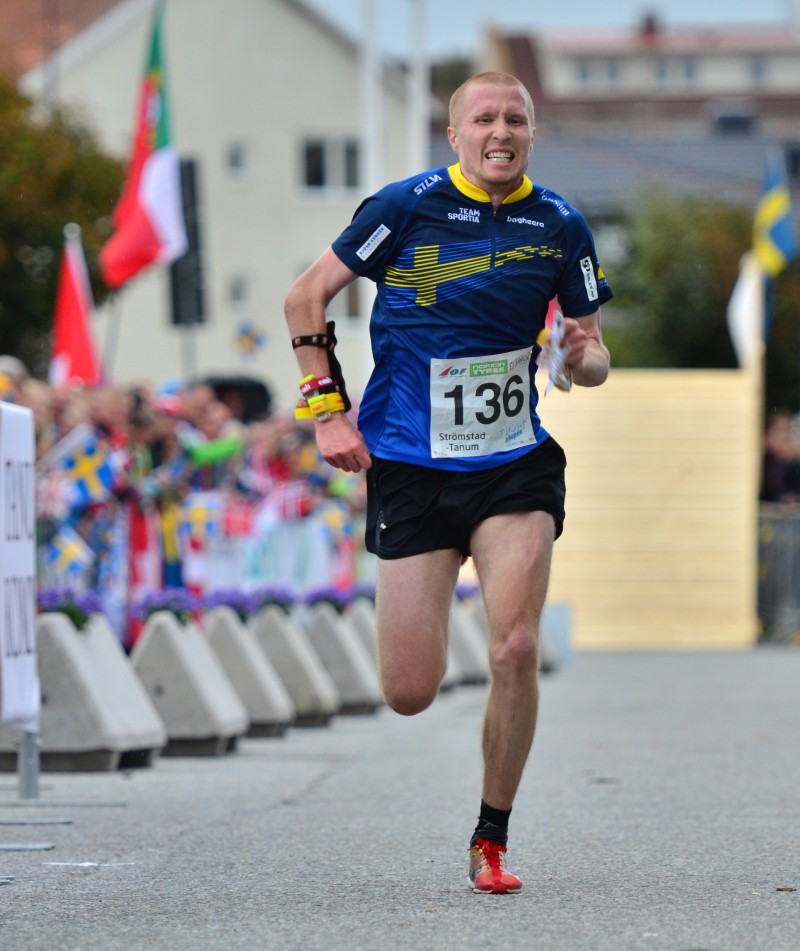
Jerker Lysell’s winning gap was only 2.8 seconds down to Matthias Kyburz in 2nd place – with Daniel Hubmann another 6 seconds behind in Bronze position. Down to Kristian Jones in 4th place there was a larger gap of another 11 seconds. Here are the Top 15 (times rounded to whole seconds) with the runners with speed to equal Jerker Lysell’s time and take Gold with a perfect race are marked in red – the runners with speed for a medal are marked in bold:
| 1. | Jerker Lysell | SWE | 14:28 | (+0:00) |
| 2. | Matthias Kyburz | SUI | 14:31 | (+0:02) |
| 3. | Daniel Hubmann | SUI | 14:37 | (+0:08) |
| 4. | Kristian Jones | GBR | 14:47 | (+0:19) |
| 5. | Jonas Leandersson | SWE | 14:50 | (+0:22) |
| 6. | Vojtech Kral | CZE | 14:52 | (+0:24) |
| 7. | Martin Regborn | SWE | 14:56 | (+0:28) |
| 8. | Frederic Tranchand | FRA | 15:02 | (+0:33) |
| 9. | Martin Hubmann | SUI | 15:06 | (+0:38) |
| 10. | Emil Svensk | SWE | 15:07 | (+0:38) |
| 11. | Eskil Kinneberg | NOR | 15:08 | (+0:40) |
| 12. | Ruslan Glibov | UKR | 15:09 | (+0:40) |
| 13. | Tim Robertson | NZL | 15:15 | (+0:46) |
| 14. | Andreu Blanes | ESP | 15:15 | (+0:47) |
| 15. | Oystein Kvaal Osterbo | NOR | 15:16 | (+0:47) |
Lysell: Three wrong routes – still enough for Gold
Jerker Lysell’s way to victory was to run a stable race without any significant mistakes except some routechoices. Jerker Lysell won 9 legs and lost 8 seconds or less to the leg winner on all legs – that was least of all runners in this race (actually he also lost 9 seconds to Tue Lassen to the 6th control, but Lassen’s split time must be wrong here as everybody loses time). Lysell’s biggest time losses were:
- 7 seconds to the 2nd control. Here the fastest is to take one of the lowermost routes – either Emil Svensk’s route which is fastest even if it has some extra climb – or one of the other routes on the left of the line. Jerker Lysell takes a non-optimal route choice to the right – but Lysell is saved by both of the other medalists Kyburz and Hubmann taking even worse routes – running even higher up and losing 2-3 seconds to Lysell instead of gaining time on him. The reason for right being slower is the extra climb in addition to more running on bare rock. It is however not many seconds you lose by taking the wrong route here – as the medalists prove it is even possible to take a medal with a wrong routechoice here.
- 6 seconds to the 9th control. Here Lysell takes the wrong route to the left – losing 6 seconds. Luckily for Lysell Kyburz and Hubmann again take the same wrong route. Kyburz executes faster though. The reason for left being slower is more stairs and narrow alleys on the leftmost route.
- 8 seconds to the 10th control. Here the time difference is partly due to Kyburz running extremely fast on this leg. The Swiss wins the leg with a 3 seconds – flat running straight ahead is a type of leg which suits Kyburz well, especially towards the end of the course as he has proved several times before. Going left is some 30 meters shorter, so the leftmost routechoice is probably 3-4 seconds faster than Lysell’s.
Kyburz: Hard to find 3 seconds lost to Lysell
Kyburz does the same two routechoice misses as Lysell to control 2 and 9 as already discussed above, but except for these two controls you really have to search hard to find the 3 seconds time loss in Kyburz’s race which represents the gap up to victory. Compared to Lysell, there are only three legs where the Swiss runner loses 3 seconds or more; to control 2 where Kyburz’s loses 3 seconds due to a route which is even worse than Lysell’s, 3 seconds to control 13 where Kyburz’s route at the first part is not 100% ideal and 4 seconds to control 16 where Kyburz has a uncertainty in an alley. Still Kyburz had similar speed to Lysell, and with a perfect race it could have been another Gold in the Swiss runners’ baggage.
A look at the legs in question:
- Leg 13 was already discussed briefly at the start of the article. The fastest route is to go slight right, but looking at the blank map you can see that it is easy to get fooled by the nice entry to the control when you go left – a straight, wide road leading directly to the control. However, when you look closer at the map, it is evident that coming to this nice wide road is quite tough, losing you more time than you gain. Kyburz nearly takes the optimal route here, but loses some time at the start of the leg along with Hubmann (see the last illustration below).
- Control 16 is an easy one, but many lose significant time by running into a wrong alley when taking the leftmost route. See the illustration below for several runners losing time here, including Kyburz, Leandersson, Westergård and Hendrickx.
Hubmann: Stable race, but slow start
As for Kyburz, it is difficult to find significant time losses in Bronze medalist Daniel Hubmann’s race except for the routechoices where Lysell also lost time. Hubmann had a slow start and was 7 seconds behind Lysell already at the third control – compared to 8 seconds in the finish. Adding three seconds lost to control 13, that is enough for filling the gap up to Lysell.
Kris Jones: Missed an alley last year – this year wrong routechoices
At the World Championships sprint 2015 on homeground, Kris Jones lost the Gold medal by missing an alley. This year non-optimal routechoice lost him a medal – and maybe even Gold. The wrong route to the 13th control (see graphics in the top of this article) cost Jones 12 seconds of the 19 he was behind in the end. A non-optimal route to the third control also cost him some seconds (5 seconds behind on this leg) – and the rest of the gap to gold was due to a better finish by Lysell. Thus good for Gold on a perfect day, but Lysell’s speed was slightly higher – and his orienteering definitely more stable.
Here is the third control where Jones loses 5 seconds – the reason being the stairs which are difficult to run fast left. Note however that the good downhill runners like Khramov can run the left route just as fast as the rightmost.
Leandersson: Winning speed until control 10, then faded
Jonas Leandersson had the winning speed until control 10 where he had a 7(!) second lead to Lysell. It looks like the three controls 8, 9 and 10 cost Leandersson so much that he couldn’t keep up the speed afterwards. After losing steadily time from control 10 – partly due to lower speed and partly due to small mistakes (running into wrong alley to control 16, uncertainty to control 19). Leandersson lost the lead to Jerker Lysell at control 16. Actually, Leandersson never run faster than Lysell after control 10. Thus in the end Leandersson didn’t have the winning speed of Lysell.
A look at the remaining legs
The above analysis has looked into most of the interesting legs on the course which were important for the race decision. There are some other legs with some interest on the course:
- Leg 3 to 4. A typical left/right around the building leg, but the stairs to the left make the story more interesting. Several runners take these stairs and loose time – but only a few seconds.
- Leg 17 to 18: Another left/right leg with a small twist. The stairs to the left make this choice less attractive – the few who run there lost significant time. Update based on comment Dalakov: Actually the problem with the left route here is that you have to go down two contour lines and up again (i.e. the stairs are probably steeper), while it in addition is longer and with more turns – thus three things making the left route choice less attractive. Three things is too much to trick many runners into taking this choice.
 World of O News
World of O News
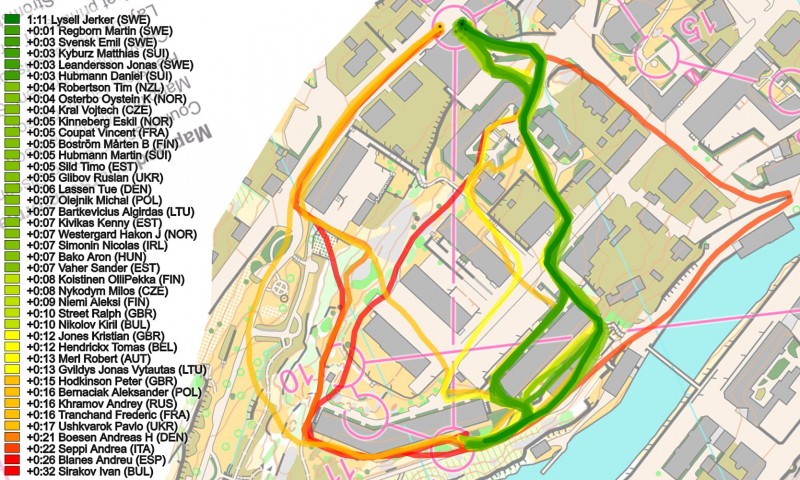
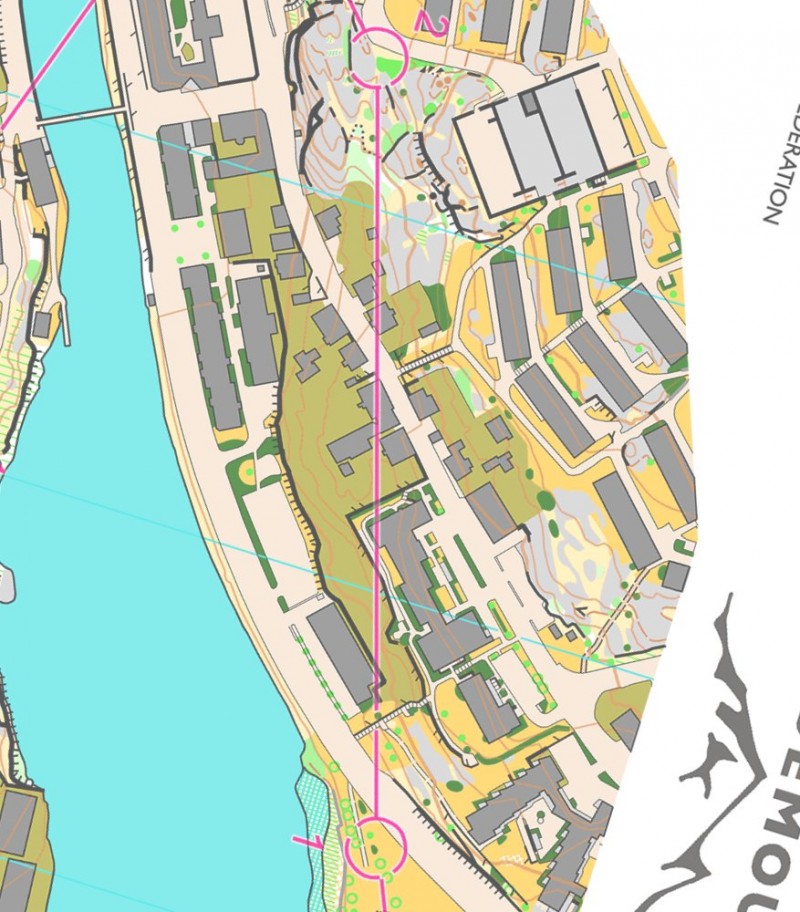
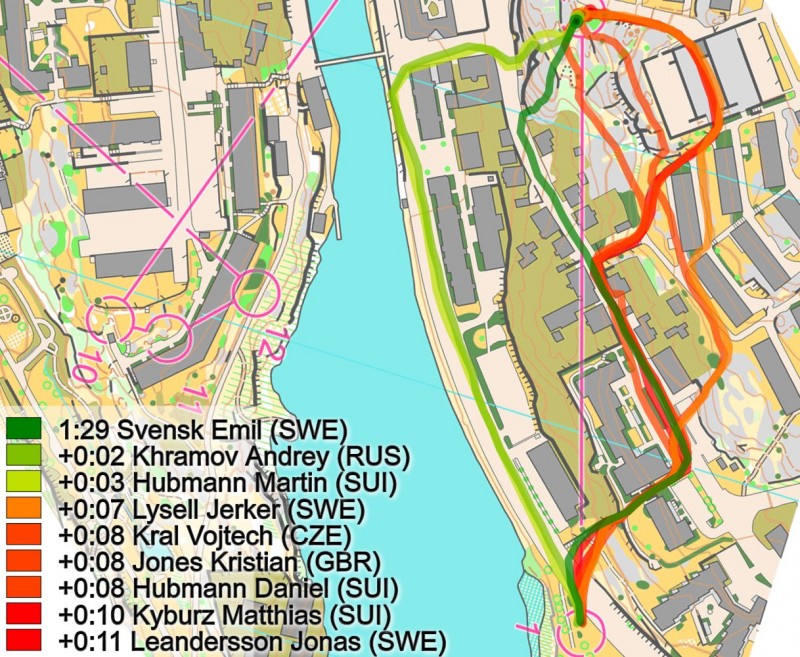
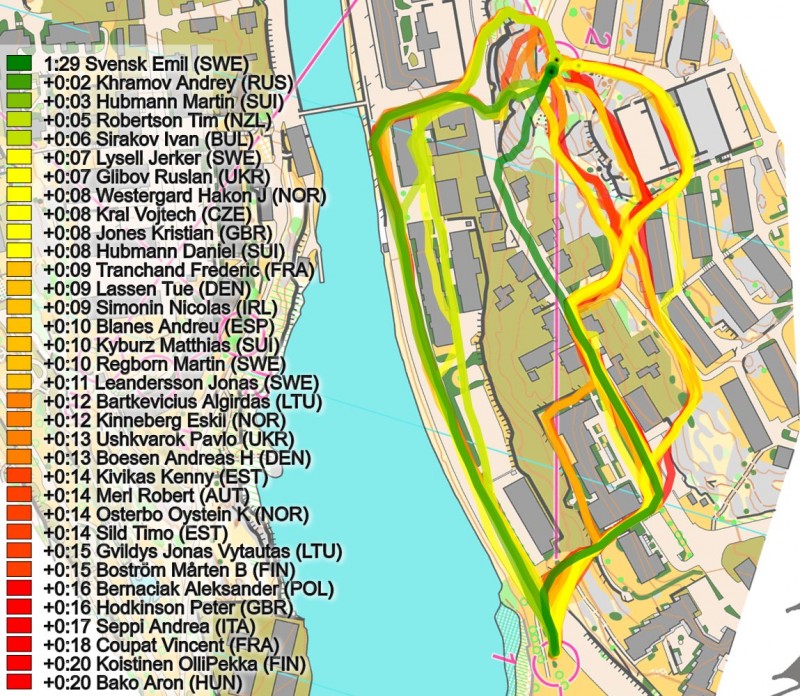
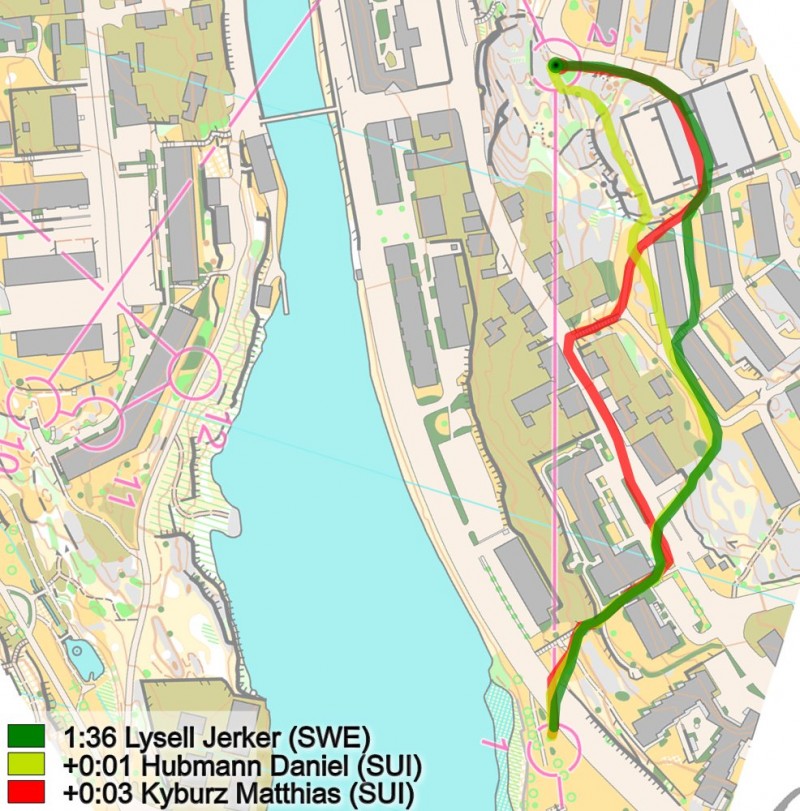
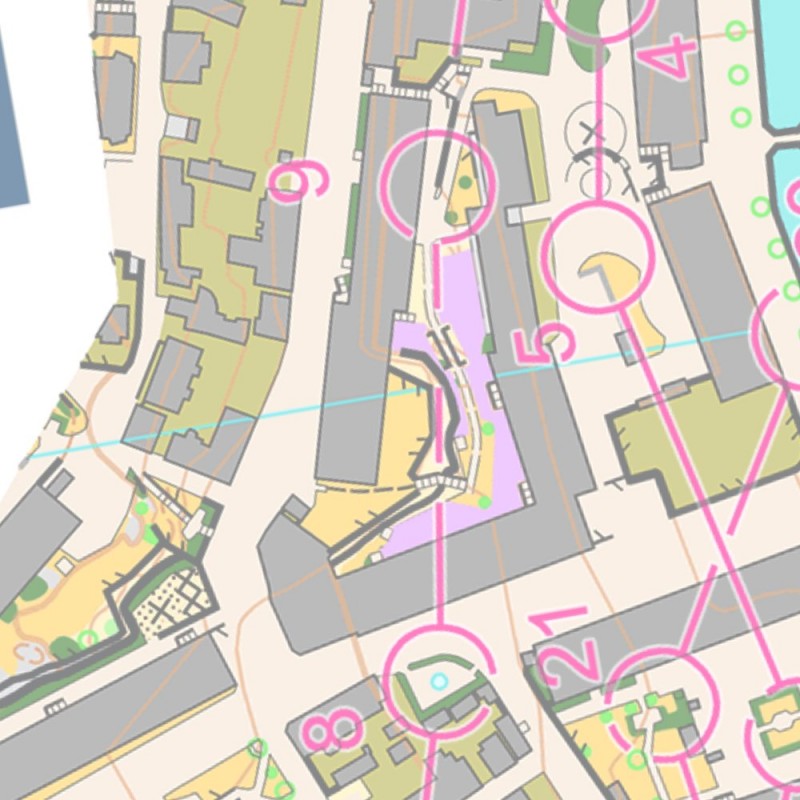
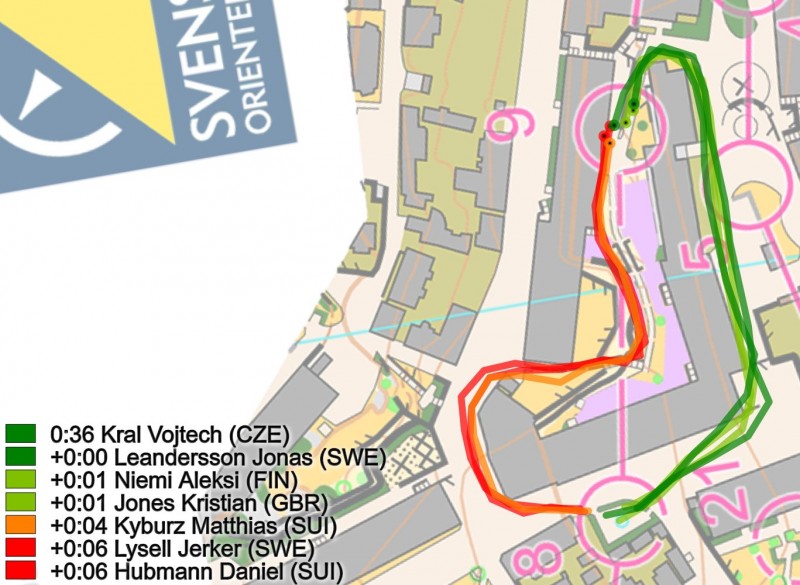
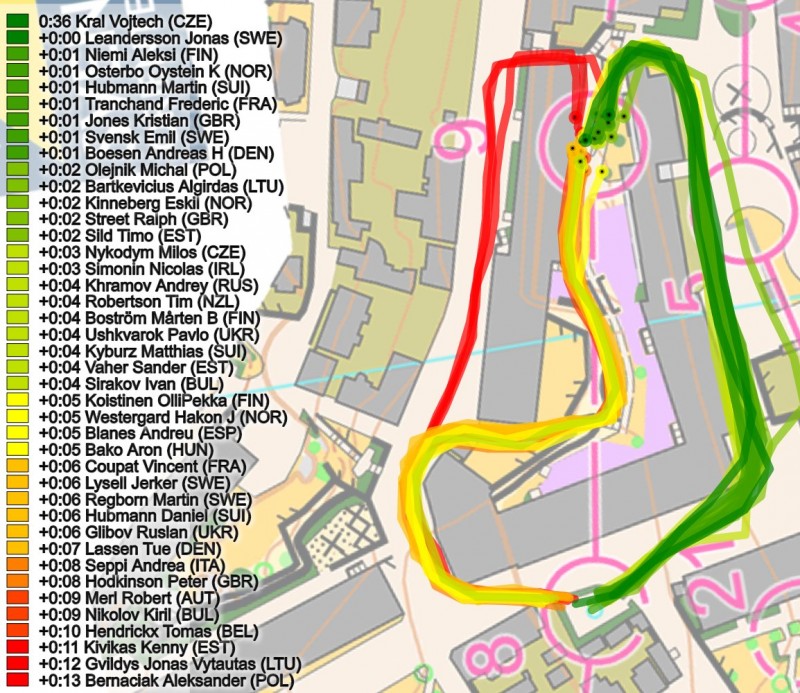
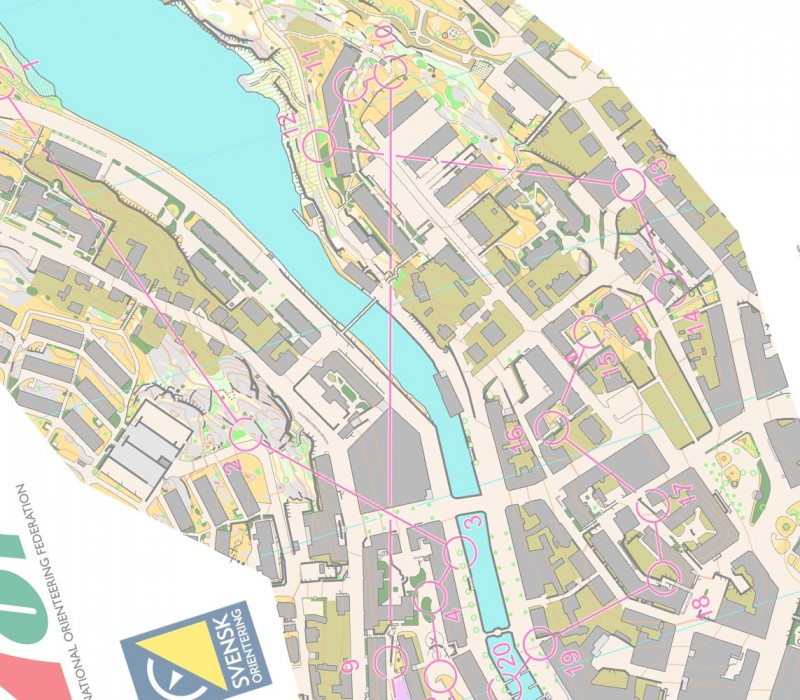
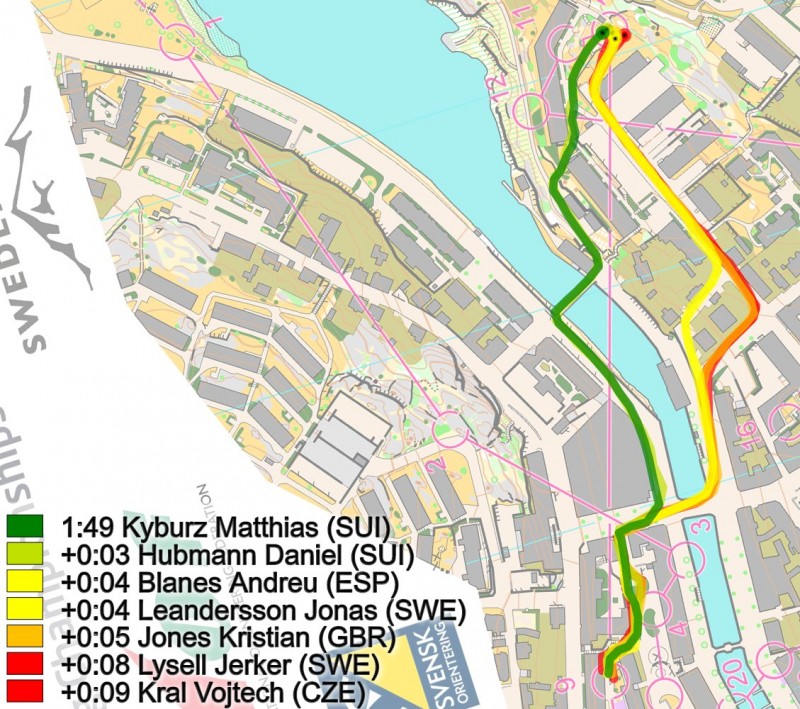
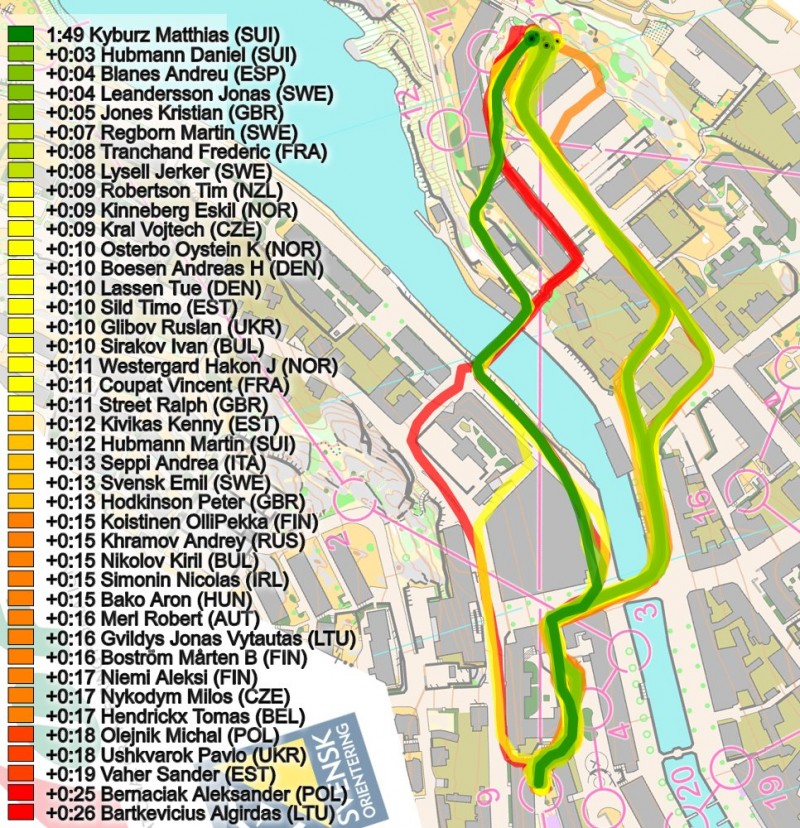
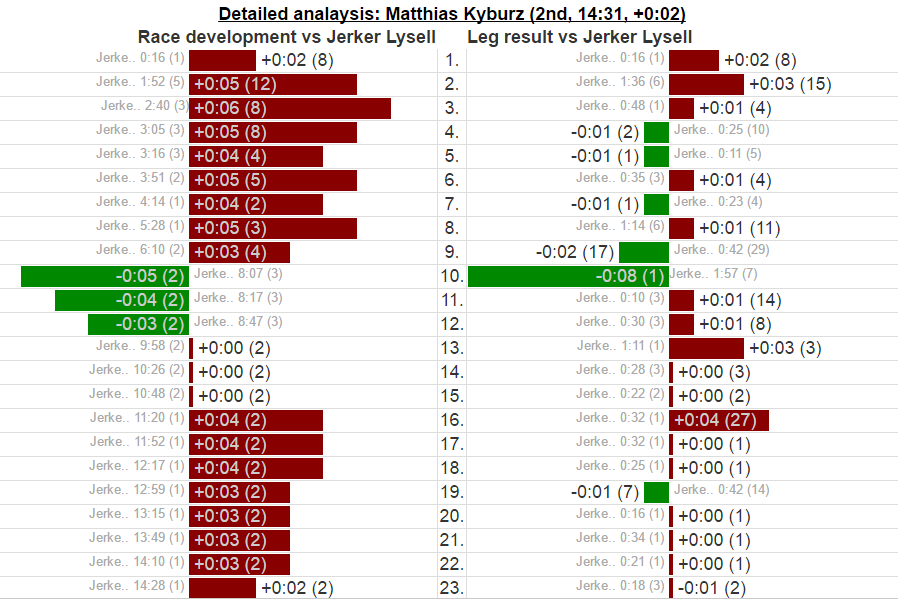
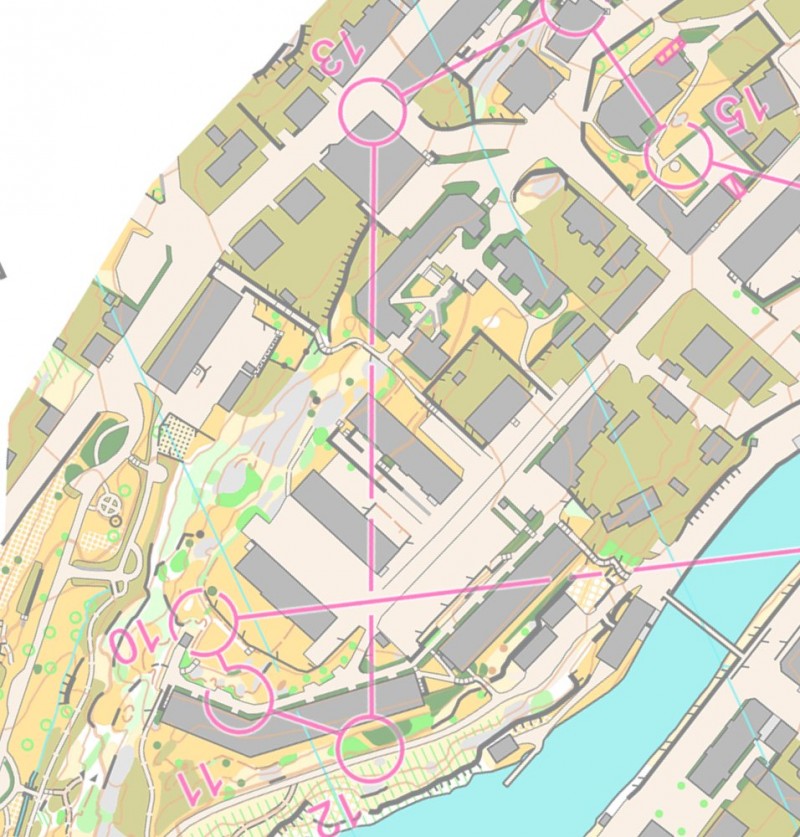
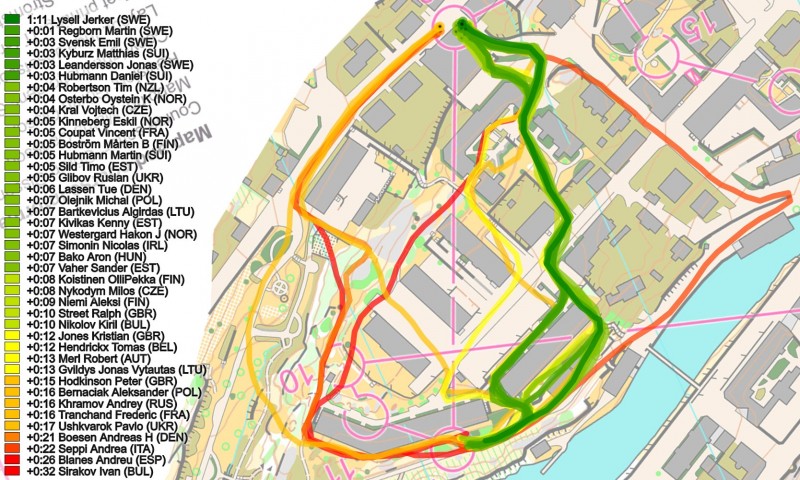
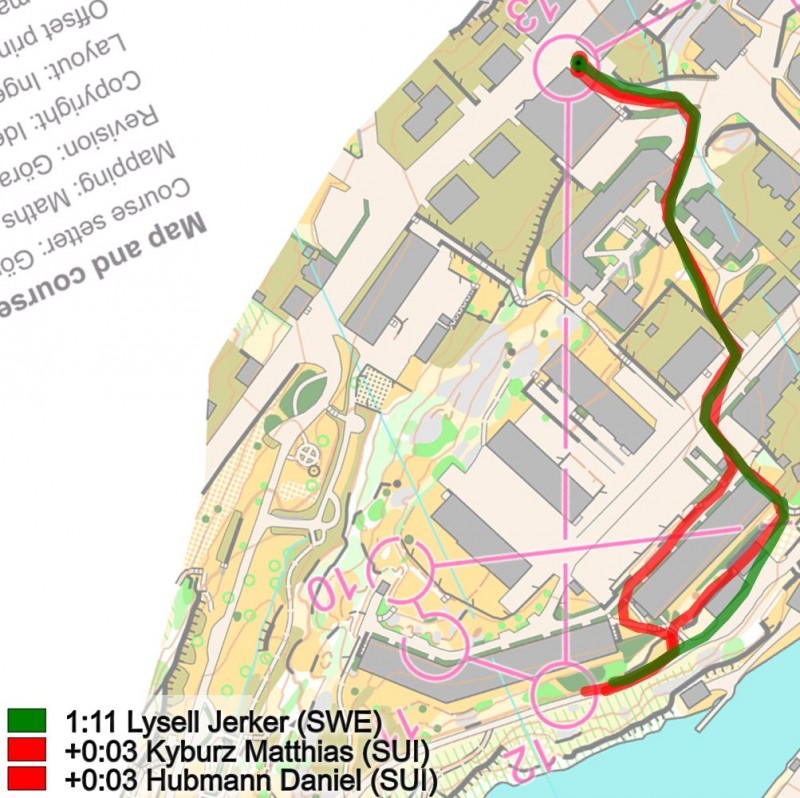
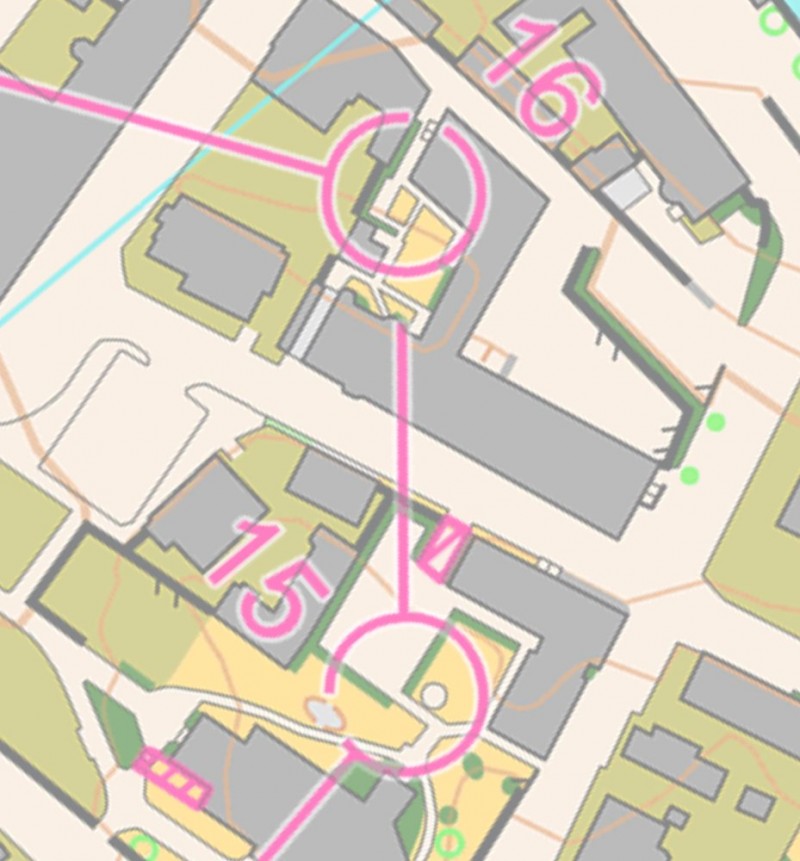
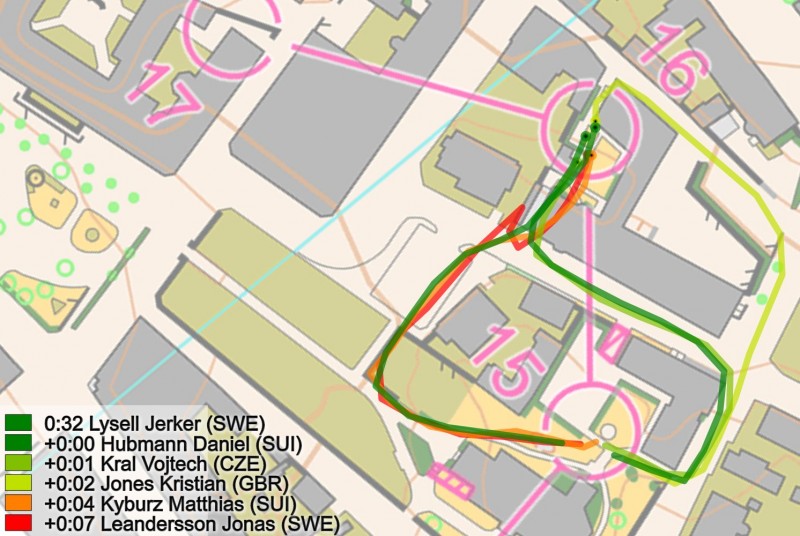
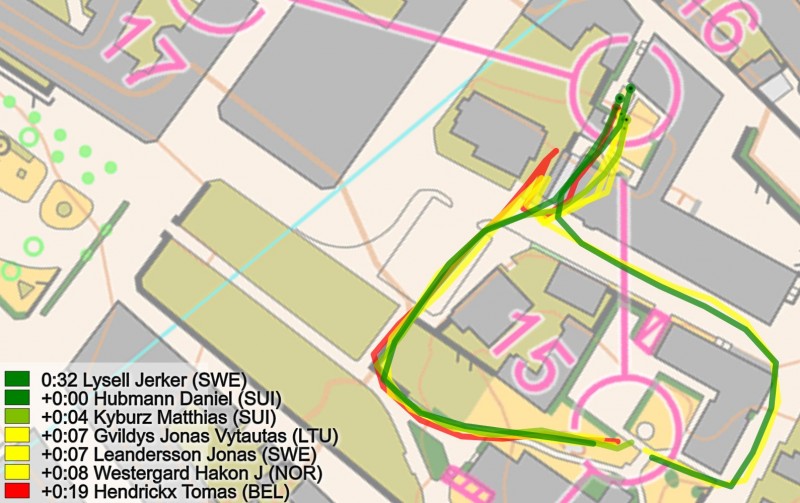
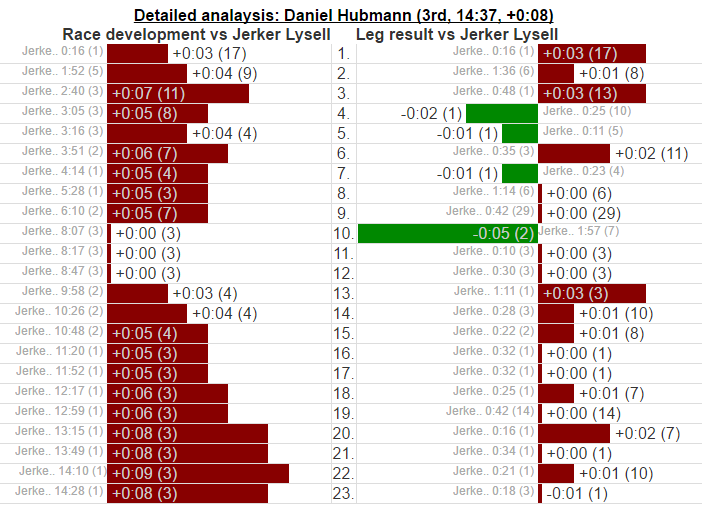
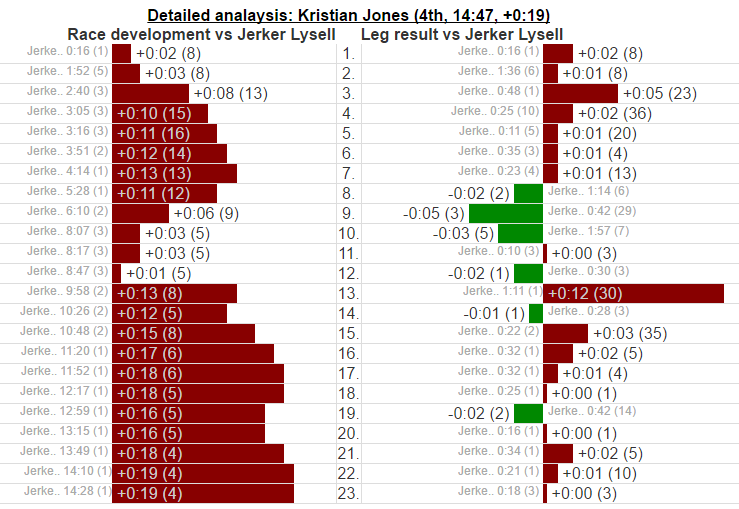
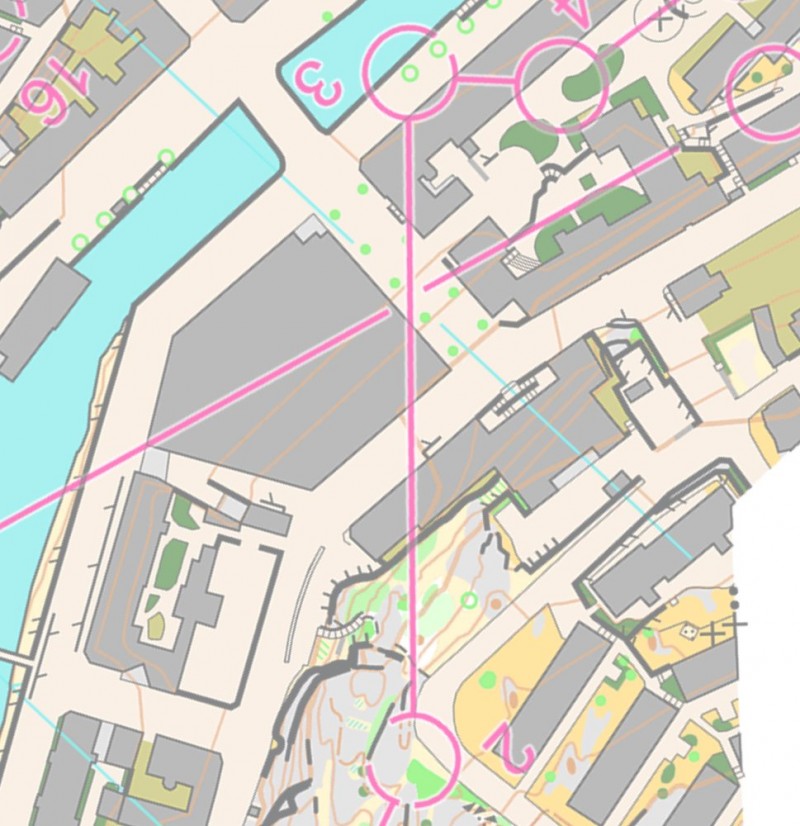
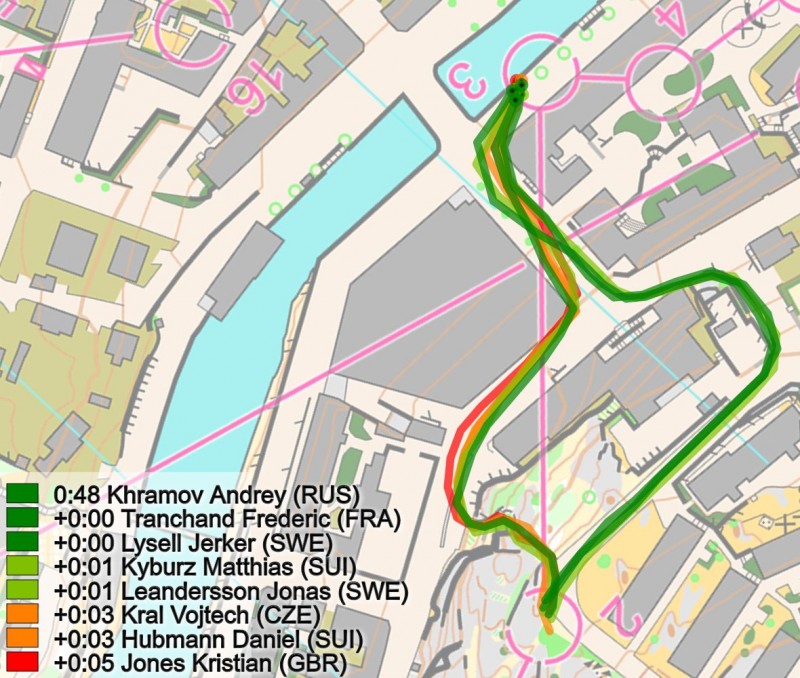
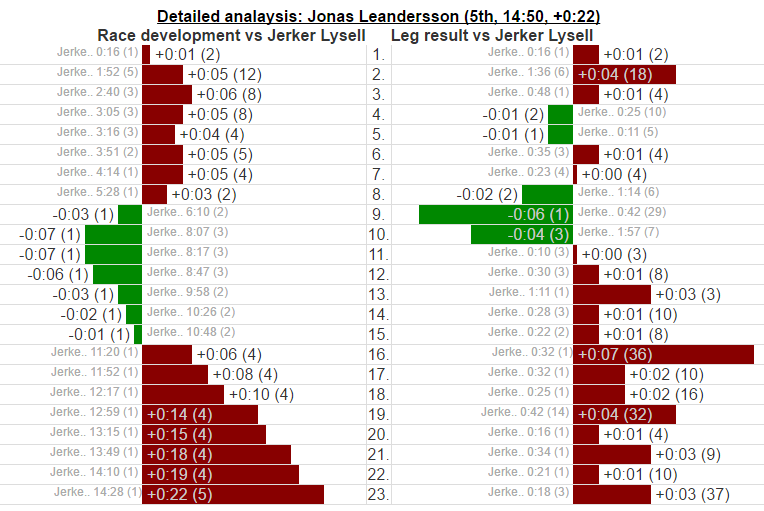
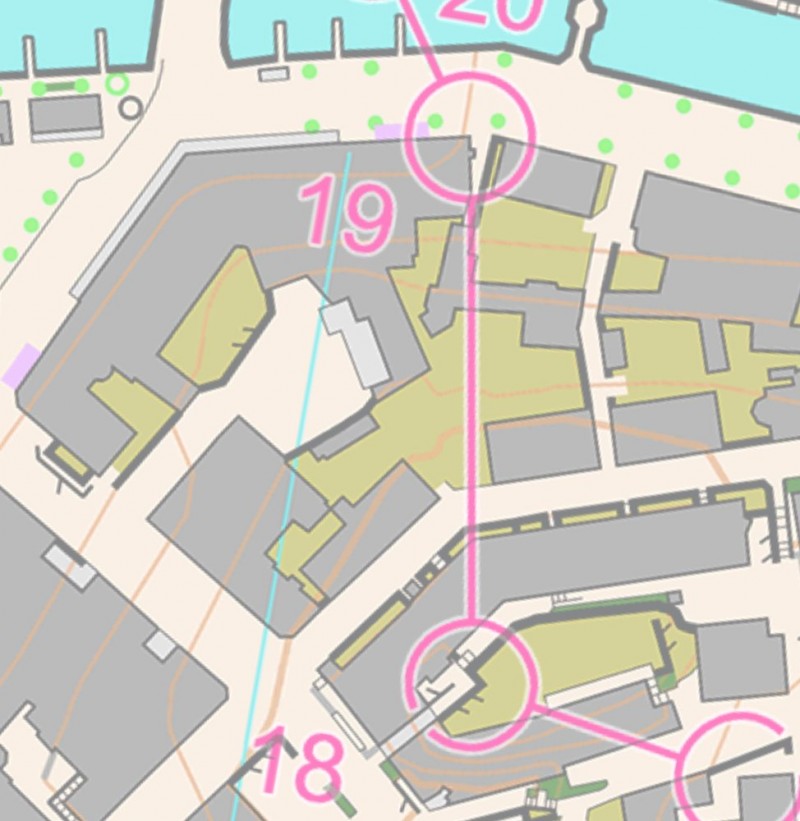
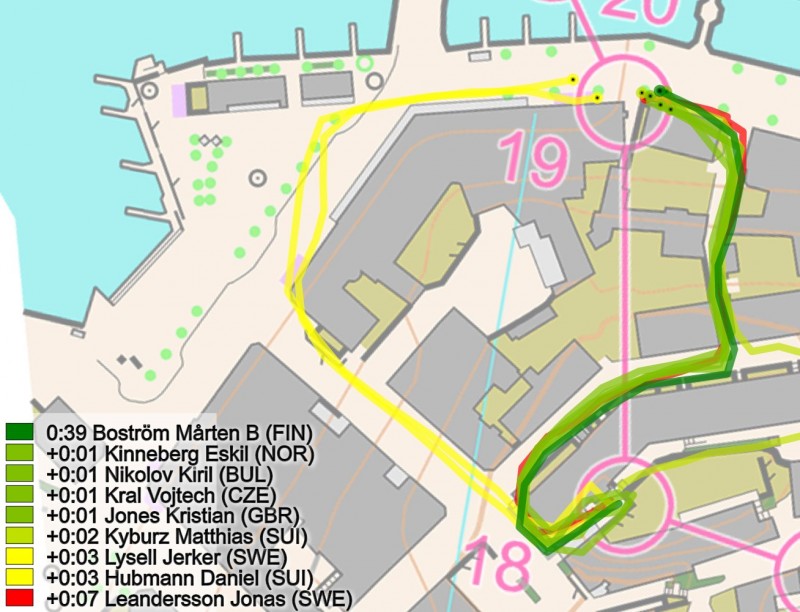
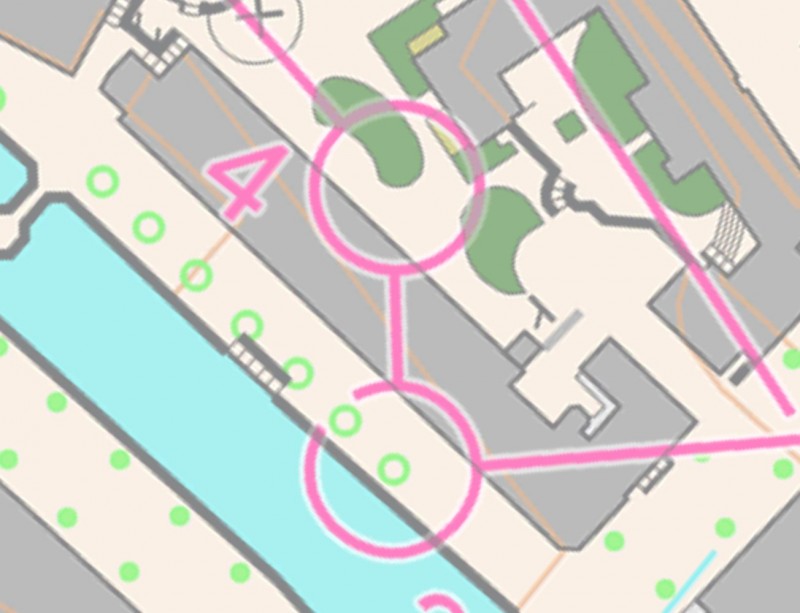
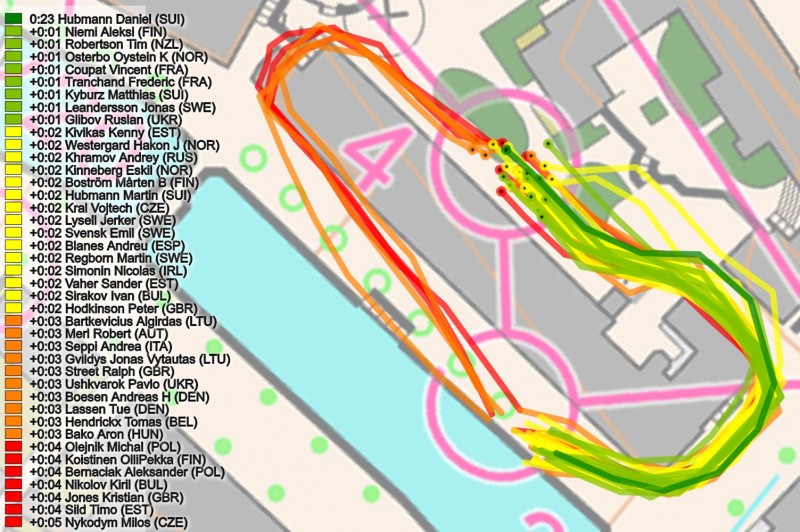
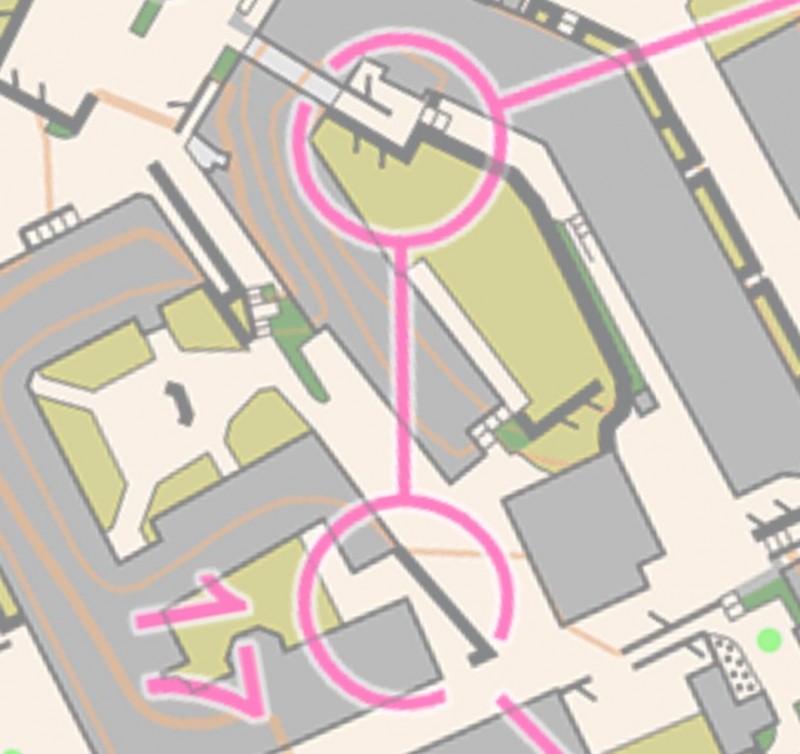
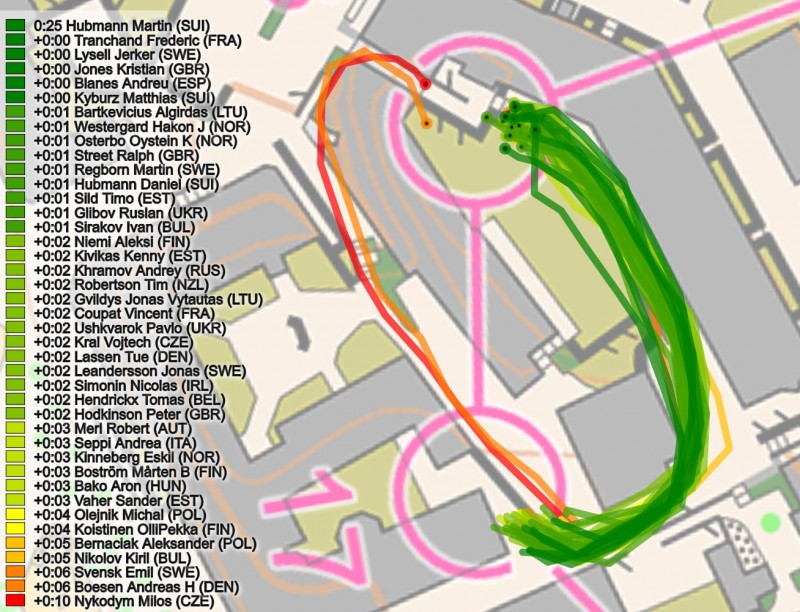

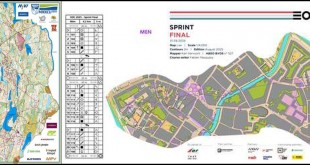
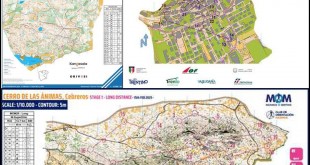
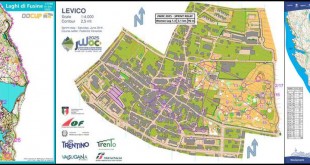
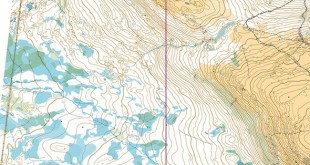
Excellent analysis. Thanks Jan. And your pre-race sprint favorites preview was amazingly spot on (Men: 1. Matthias Kyburz, 2. Jerker Lysell, 3. Daniel Hubmann ; Women: 1. Maja Alm 2. Judith Wyder 3. Galina Vinogradova). Women’s surprise medalist Anastasia Denisova of BLR had a great run and good speed.
I’d like to join JK and say thanks for the very interesting analysis, Jan. And to add a comment regarding Denisova. This was the big positive surprise of the event, but it was embarrasing to listen to the international TV broadcast where the commentators repeatedly called her Bulgarian. BLR stands for Belarus, that is something ALL sport nerds know independent of what sport they are into. Saying runners were half a minute late when they actually were half a minute early and calling Ukrainian runner Ruslan Glibov Russian added to this. Could we please have some better commentators in the international broadcast at WOC2017! E.g., Jørn Sundby supported by a crew that can follow and interpret the GPS tracking properly? Our sport can still be presented so much better!
Excellent analysis, Jan.
Just one remark: You said: “Leg 17 to 18: Another left/right leg with a small twist. The stairs to the left make this choice less attractive – the few who run there lost significant time.”
Actually the right routechoice also has stairs, but it is shorter, and doesn’t have sharp turns, that’s why it is faster.